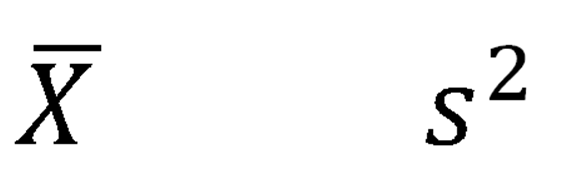| Parameter |
|---|
|
A characteristic that describes a population is called a parameter. Because it is often difficult (or impossible) to measure an entire population, parameters are most often estimated. |
Parameters are usually written as Greek letters. Iíve already taught you about two: population mean, and population standard deviation.

|
Figure 1. |
|---|
| Statistic |
|---|
|
A characteristic that describes a sample is called a statistic. Statistics are most often used to estimate the value of unknown parameters. |
Statistics are usually written as Latin (think: normal) letters. Hereís two Iíve already taught you: sample mean, and sample variance.

|
Figure 2. |
|---|
For example, if I were to measure the height of 5000 randomly selected individuals, then find the mean of the heights I collected, the resulting value would be a statistic. I could then use the value of this statistic to make an estimation of the mean height of the population, which is a parameter.
| Sampling Error |
|---|
|
Sampling error is any difference that exists between a statistic and its corresponding parameter. |
Imagine that after measuring the heights of 5000 individuals, I calculate a statistic which estimates the population mean (a parameter) to be 68 inches. However, my estimate is off, and the actual mean of individuals in the population in 70 inches. This discrepancy is known as sampling error.